Cinnamon Cockatiel Bird: Best Ultimate Guide For Happy Pets

Table of Contents
Introduction
I’ll never forget the first time I met a Cinnamon Cockatiel. The warm, golden-brown hues of its feathers caught the sunlight as it perched contentedly on its owner’s shoulder, occasionally nuzzling against their cheek with obvious affection. That enchanting moment perfectly captured why these beautiful birds have become such beloved companions for bird enthusiasts worldwide.
The Cinnamon Cockatiel is one of the most sought-after color mutations of the standard cockateel, prized for its stunning appearance and delightful personality. These beautiful birds stand out from their wild-type counterparts with their distinctive warm cinnamon-brown coloration replacing the typical gray plumage, creating a truly eye-catching pet that brings both visual joy and companionship to any home.
Cockatiels as a species have earned their reputation as excellent companion birds due to their friendly nature, intelligence, and relatively easy care requirements compared to larger parrots. The Cinnamon cockateel variation maintains all these wonderful traits while adding a unique aesthetic appeal that many bird lovers find irresistible.
In this comprehensive guide, we’ll explore everything you need to know about Cinnamon Cockatiels—from their distinctive appearance and personality traits to detailed care instructions, health considerations, training tips, and advice on bringing one of these charming birds into your home. Whether you’re considering adding a Cinnamon cockateel to your family or are already caring for one, this article will provide valuable insights to ensure your feathered friend thrives in your care.
What is a Cinnamon Cockatiel? (Detailed Description)
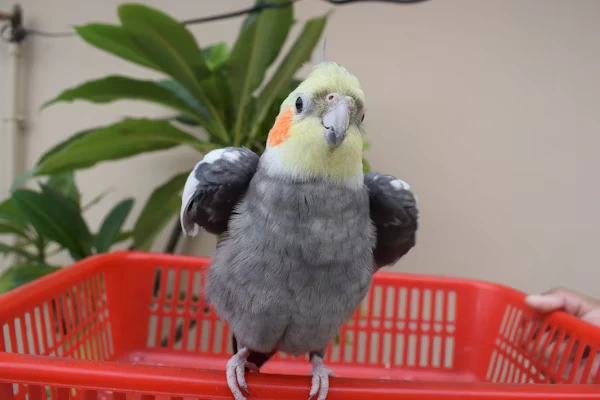
Appearance
The Cinnamon Cockatiel is a color mutation that results from a genetic alteration affecting melanin production. While standard cockateels display gray bodies with yellow faces and orange cheek patches, Cinnamon Cockatiels showcase a warm, brownish plumage throughout their bodies that ranges from light tan to rich cinnamon-brown tones.
This beautiful mutation occurs when a bird inherits a specific recessive gene that affects how melanin (the pigment responsible for dark coloration) is distributed in the feathers. In Cinnamon Cockatiels, the black melanin is replaced by brown melanin, resulting in their characteristic coloration. Their wings and tail feathers appear brown instead of the typical gray-black, while their face retains the vibrant yellow and orange cheek patches typical of standard cockateels.
Male Cinnamon Cockatiels typically have brighter facial coloration than females, with more vivid yellow faces and distinct orange cheek patches. Females often display subtle barring patterns on the underside of their tail feathers and may have a slightly more muted appearance overall. However, these differences can be subtler in the cinnamon variation compared to standard gray cockateels.
When compared to other cockatiel mutations:
- Lutino Cockatiels lack melanin entirely, resulting in bright yellow/white birds with red eyes
- Pearl Cockatiels display distinctive spotting patterns throughout their plumage
- Pied Cockatiels have patches of yellow/white amidst their normal coloration
- Cinnamon Cockatiels maintain the same pattern as normal cockateels but with brown replacing gray/black
Size and Lifespan
Cinnamon Cockatiels share the same physical characteristics as standard cockateels aside from their coloration:
Size:
- Length: 12-13 inches (30-33 cm), including tail feathers
- Weight: 2.5-4.2 ounces (70-120 grams)
- Wingspan: approximately 7-9 inches (18-23 cm)
These medium-sized parrots make ideal pets as they’re large enough to handle comfortably but not so large as to require extensive housing or create excessive noise.
Lifespan: With proper care, Cinnamon Cockatiels typically live 15-20 years, though some well-cared-for birds have been known to reach 25+ years. Several factors influence their longevity:
- Diet and nutrition quality
- Housing conditions and cleanliness
- Exercise and mental stimulation
- Preventative healthcare and regular veterinary checkups
- Genetics and breeding quality
- Stress levels and social well-being
Temperament and Personality
Cinnamon Cockatiels possess the same delightful temperament that has made cockateels one of the most popular pet birds worldwide. They are known for being:
- Affectionate: They often bond deeply with their owners and enjoy physical contact like head scratches and gentle petting
- Social: They thrive on interaction and can become lonely or depressed without adequate attention
- Intelligent: They can learn tricks, simple commands, and may even mimic certain words or tunes
- Relatively quiet: While they do vocalize, their calls are generally less loud and piercing than larger parrot species
- Gentle: They typically have a mild disposition that makes them suitable for families and first-time bird owners
There is no scientific evidence suggesting that the cinnamon mutation affects temperament—the personality traits of a Cinnamon Cockatiel are influenced by the same factors as any cockateel: genetics, early handling experiences, socialization, and individual variation.
Vocalization and Noise Levels: Male cockatiels tend to be more vocal than females, often learning to whistle tunes and occasionally mimicking words or household sounds. Their typical vocalizations include:
- Whistling (particularly males)
- Soft chirping
- Contact calls when seeking attention
- Louder alarm calls when startled or frightened
While cockatiels are quieter than many larger parrot species, potential owners should be aware that all cockateels will produce some noise, particularly during morning and evening hours.
Cinnamon Cockatiel Care
Housing
Cage Size Recommendations: For a single Cinnamon Cockatiel, the minimum cage dimensions should be:
- 20 inches wide x 20 inches deep x 24 inches high (50cm x 50cm x 60cm)
- Bar spacing: 1/2 to 5/8 inch (1.3-1.6cm)
For two cockateels or to provide optimal space, consider:
- 24 inches wide x 24 inches deep x 30 inches high (60cm x 60cm x 75cm) or larger
Remember that larger is always better when it comes to cage size—cockatiels need room to stretch their wings, play, and move about comfortably.
Cage Setup: Your Cinnamon Cockatiel’s cage should include:
- Perches: Provide 3-4 perches of varying diameters (1/2 inch to 1 inch) and textures to promote foot health. Natural, untreated wood perches (such as apple, willow, or manzanita) are excellent options.
- Toys: Include a variety of toys that encourage foraging, chewing, and mental stimulation. Rotate toys regularly to prevent boredom.
- Food and Water Dishes: Place these away from perches to prevent contamination from droppings. Stainless steel or ceramic dishes are recommended for hygiene.
- Cage Liner: Use plain paper, paper towels, or specialized cage liners for easy cleaning.
Cage Placement: Position your Cinnamon Cockatiel’s cage:
- Away from drafts, air vents, and open windows
- Out of direct sunlight which can cause overheating
- In a room where the family gathers (cockateels are social and enjoy being part of the action)
- Away from the kitchen (cooking fumes can be harmful)
- At eye level or slightly below to help your bird feel secure
Diet
A nutritionally balanced diet is critical for your Cinnamon Cockatiel’s health, plumage quality, and longevity.
Pelleted Food (60-70% of diet): High-quality formulated pellets provide consistent nutrition and should form the foundation of your cockateel’s diet. Recommended brands include:
- Harrison’s Bird Foods
- Roudybush
- ZuPreem
- Lafeber’s
Fresh Fruits and Vegetables (20-30% of diet): Offer daily servings of fresh, washed produce such as:
Safe options include:
- Leafy greens (kale, spinach in moderation, romaine lettuce)
- Carrots and carrot tops
- Bell peppers
- Broccoli and cauliflower (in moderation)
- Apples (no seeds)
- Berries
- Melon
Avoid:
- Avocado (toxic to birds)
- Onions and garlic
- Chocolate
- Caffeine
- High-salt or high-fat foods
Seeds and Treats (10% or less of diet): While cockatiels love seeds, they should be limited due to their high fat content. Use seeds as training treats or occasional supplements. Millet spray can be a favorite treat but should be offered sparingly.
Water Requirements: Fresh, clean water should be available at all times. Change water daily and clean dishes regularly to prevent bacterial growth.
Enrichment and Exercise
Toys and Activities: Cinnamon Cockatiels are intelligent birds that need mental stimulation to prevent boredom and behavioral issues:
- Foraging toys: Hide treats in toys to encourage natural foraging behavior
- Shreddable toys: Paper, cardboard, or safe wood that can be chewed and destroyed
- Puzzle toys: Simple puzzles that reward with treats help stimulate problem-solving abilities
- Bells and noise-making toys: Many cockateels enjoy making sounds with their toys
Out-of-cage Time: Cockatiels need daily supervised time outside their cage to exercise and explore:
- Aim for at least 1-2 hours daily of out-of-cage time
- Ensure the room is bird-proofed (no open windows, ceiling fans turned off, no toxic plants)
- Provide play stands or perches around the room
- Always supervise out-of-cage time to prevent accidents
Social Interaction: Cinnamon Cockatiels are highly social and require regular interaction:
- Spend time talking to, playing with, and handling your bird daily
- If you work long hours, consider getting a second cockateel for companionship
- Even with bird companions, human interaction remains important
Grooming
Bathing: Cinnamon Cockatiels need regular bathing to maintain healthy feathers and skin. Options include:
- Misting with a clean spray bottle filled with room-temperature water
- Offering a shallow dish for bathing
- Running a very gentle shower or faucet that your bird can choose to walk into
Aim to provide bathing opportunities 1-3 times weekly.
Nail Trimming: Overgrown nails can cause discomfort and potential injury:
- Check nails monthly for length
- Trim only the sharp tips using bird-specific nail clippers
- Have styptic powder ready in case of bleeding
- If unsure, have a veterinarian demonstrate proper technique
Feather Care: Healthy Cinnamon Cockatiels should maintain their feathers through preening, but you should:
- Monitor for signs of abnormal feather loss or damaged feathers
- Provide proper nutrition for healthy feather growth
- Ensure adequate humidity (40-60%) in your home
- Watch for signs of over-preening or feather plucking
Health
Common Health Problems
Like all cockatiels, Cinnamon Cockatiels may be susceptible to certain health issues:
- Respiratory infections: Often caused by drafts, poor air quality, or bacterial/fungal pathogens
- Psittacosis (parrot fever): A bacterial infection that can be transmitted between birds and humans
- Nutritional deficiencies: Particularly vitamin A, calcium, and iodine deficiencies
- Feather plucking: Often stress-related or due to medical issues
- Egg binding: Female cockateels may have difficulty passing eggs
- Obesity: From seed-heavy diets and insufficient exercise
- Fatty liver disease: Often diet-related
Signs of Illness
Watch for these warning signs that your Cinnamon Cockatiel may be ill:
- Fluffed-up feathers (especially during daytime)
- Lethargy or unusual inactivity
- Changes in droppings (color, consistency, frequency)
- Decreased appetite or water consumption
- Discharge from eyes, nares (nostrils), or mouth
- Labored breathing or tail bobbing when breathing
- Unusual vocalizations or cessation of normal vocalizations
- Weight loss
- Changes in behavior
Importance of Veterinary Care
Regular visits to an avian veterinarian are essential:
- Find an avian-certified veterinarian or one with experience treating birds
- Schedule annual wellness exams
- Seek immediate care for any signs of illness (birds often hide symptoms until seriously ill)
- Consider baseline blood work to establish normal values for your bird
Preventative Care
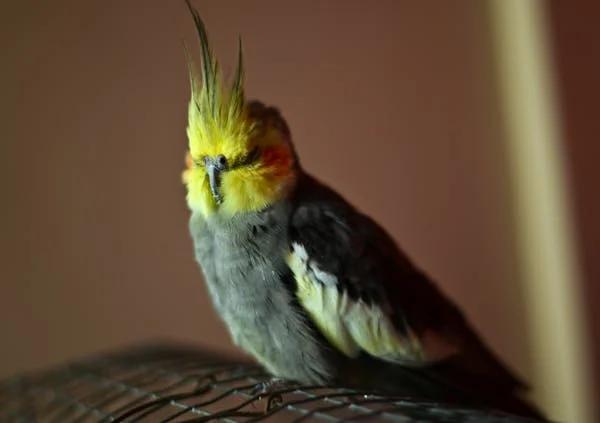
Prevent health problems through proactive measures:
- Maintain a clean environment (regular cage cleaning)
- Provide proper nutrition
- Ensure adequate exercise and mental stimulation
- Protect from drafts, temperature extremes, and toxins
- Quarantine new birds before introducing them
- Regular health monitoring and weighing
Training and Socialization
Basic Training Commands
Cinnamon Cockatiels are intelligent birds that respond well to positive reinforcement:
Step-Up Command:
- Gently press your finger against your bird’s lower chest while saying “step up”
- Reward with praise and occasionally small treats
- Practice regularly in short sessions
Recall Training:
- Start with short distances and call your bird with a consistent command
- Reward immediately when your bird comes to you
- Gradually increase distance as reliability improves
Clicker Training
Many cockatiels respond well to clicker training:
- Associate the click sound with treats through repetition
- Click precisely when your bird performs the desired behavior
- Follow clicks immediately with rewards
- Use the clicker to shape complex behaviors through successive approximations
Socialization
Proper socialization helps create a well-adjusted Cinnamon Cockatiel:
With Humans:
- Handle your bird gently and regularly from a young age
- Introduce new people gradually and in positive contexts
- Always respect your bird’s body language and comfort levels
With Other Pets:
- Never leave your cockateel unsupervised with other pets
- Introduce other pets slowly and at a distance initially
- Be particularly careful with natural predators like cats
- Ensure your bird always has a safe retreat
Dealing with Behavioral Issues
Biting:
- Identify and address the cause (fear, territorial behavior, hormonal changes)
- Avoid punishment, which can increase fear and aggression
- Use positive reinforcement for gentle interactions
- Work with an avian behaviorist for persistent problems
Screaming:
- Determine if screaming is normal contact calling or problematic
- Don’t reinforce screaming by responding immediately with attention
- Reward quiet behavior
- Ensure adequate mental stimulation and exercise
Buying a Cinnamon Cockatiel
Reputable Breeders vs. Pet Stores
Reputable Breeders:
- Pros: Healthier birds, known genetic history, often hand-raised and socialized, breeder support
- Cons: May be more expensive initially, might have waiting lists
Pet Stores:
- Pros: Immediate availability, sometimes lower initial cost
- Cons: Unknown background, potentially less socialized, possible health issues
Questions to Ask Before Buying
Before bringing home a Cinnamon Cockatiel, ask:
- How old is the bird?
- Was it hand-raised or parent-raised?
- Has it been seen by an avian veterinarian?
- What diet has it been eating?
- Has it been exposed to other birds that might have been ill?
- What is the return policy if health issues arise?
- Can the seller provide references from other customers?
What to Look for in a Healthy Bird
A healthy Cinnamon Cockatiel should:
- Have bright, clear eyes
- Have clean nostrils with no discharge
- Display smooth, clean feathers without bald patches
- Have a clean vent area
- Be alert and responsive
- Have a plump breast (not too thin or too heavy)
- Show interest in surroundings
- Have normal droppings
Adoption
Consider adopting a cockateel from:
- Bird rescues
- Avian sanctuaries
- Rehoming situations
- Bird clubs
Adoption often gives a deserving bird a second chance and may cost less than purchasing from breeders or pet stores.
Cost of a Cinnamon Cockatiel
Initial Costs:
- Bird: $150-300 for a Cinnamon Cockatiel (varies by location, breeder, age)
- Cage: $100-300 for a quality cage
- Startup supplies (perches, dishes, toys): $50-100
- Initial veterinary exam: $50-150
Ongoing Costs:
- Food: $20-40 monthly
- Toys and enrichment: $10-30 monthly
- Annual veterinary care: $100-300
- Emergency fund: Recommend setting aside $300-500 for unexpected medical needs
Common Questions about Cinnamon Cockatiels
Q: Do Cinnamon Cockatiels talk like other parrots? A: Cockatiels can learn to mimic some words and sounds, though they’re not as prolific as larger parrots like African Greys or Amazons. Males typically have better speech abilities than females.
Q: How can I tell if my Cinnamon Cockatiel is male or female? A: In mature birds (over 6-12 months), males typically have brighter yellow faces and more vibrant cheek patches. Females often have subtle barring under their tail feathers and may be more subdued in coloration. DNA testing is the most accurate method.
Q: Can Cinnamon Cockatiels live with other birds? A: Yes, cockateels can often cohabitate with other cockatiels or similarly sized peaceful birds, though introductions should be gradual and supervised. Individual personality compatibility matters more than species.
Q: How often should I clean my cockatiel’s cage? A: Daily spot cleaning (removing droppings and soiled food), weekly cleaning of all accessories, and monthly deep cleaning of the entire cage is recommended.
Q: Will my Cinnamon Cockatiel’s color change as it ages? A: Young Cinnamon Cockatiels may have slightly different coloration than adults. After their first molt (around 6-12 months), they will display their adult coloration which should remain relatively stable throughout life.
Conclusion
Cinnamon Cockatiels make wonderful companions for bird enthusiasts of all experience levels. Their stunning warm-brown plumage sets them apart visually, while they retain all the charming personality traits that have made cockateels one of the most beloved pet birds worldwide.
With their manageable size, moderate noise levels, affectionate nature, and relatively straightforward care requirements, these beautiful birds can bring years of companionship and joy to your home. The cinnamon mutation adds a unique aesthetic appeal that many find irresistible while maintaining all the lovable characteristics of the standard cockatiel.
Remember that bringing a Cinnamon Cockatiel into your life is a long-term commitment—with proper care, these feathered friends can live 15-20 years or more. By providing appropriate housing, nutrition, enrichment, socialization, and healthcare, you’ll be rewarded with a devoted companion that brightens your home with both its beautiful plumage and engaging personality.
If you’re considering adding a Cinnamon Cockatiel to your family, take time to research reputable breeders or rescue organizations in your area, prepare your home properly, and connect with an avian veterinarian before bringing your new friend home. Your efforts will lay the groundwork for a successful and rewarding relationship with your Cinnamon Cockatiel for years to come.

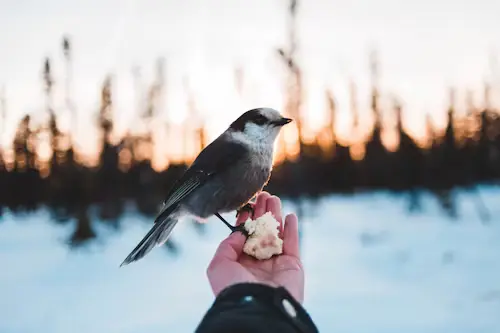
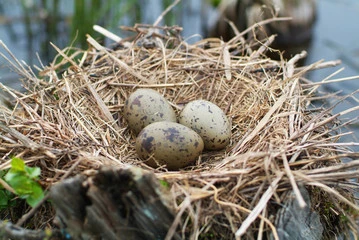
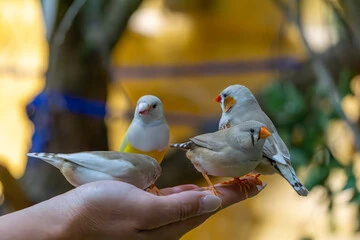
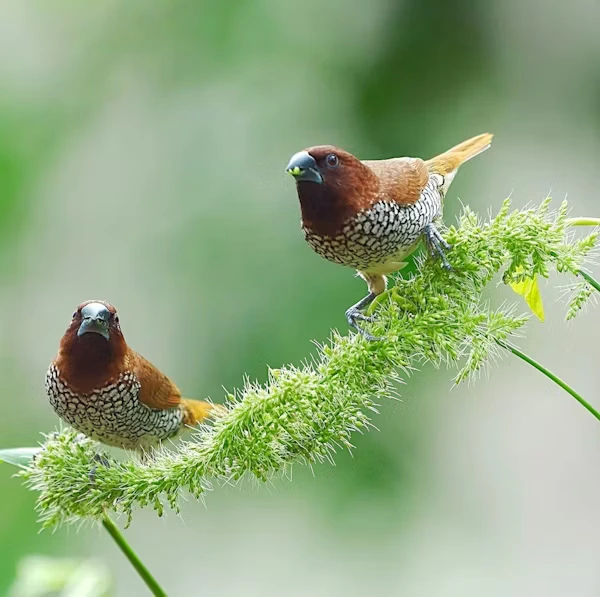
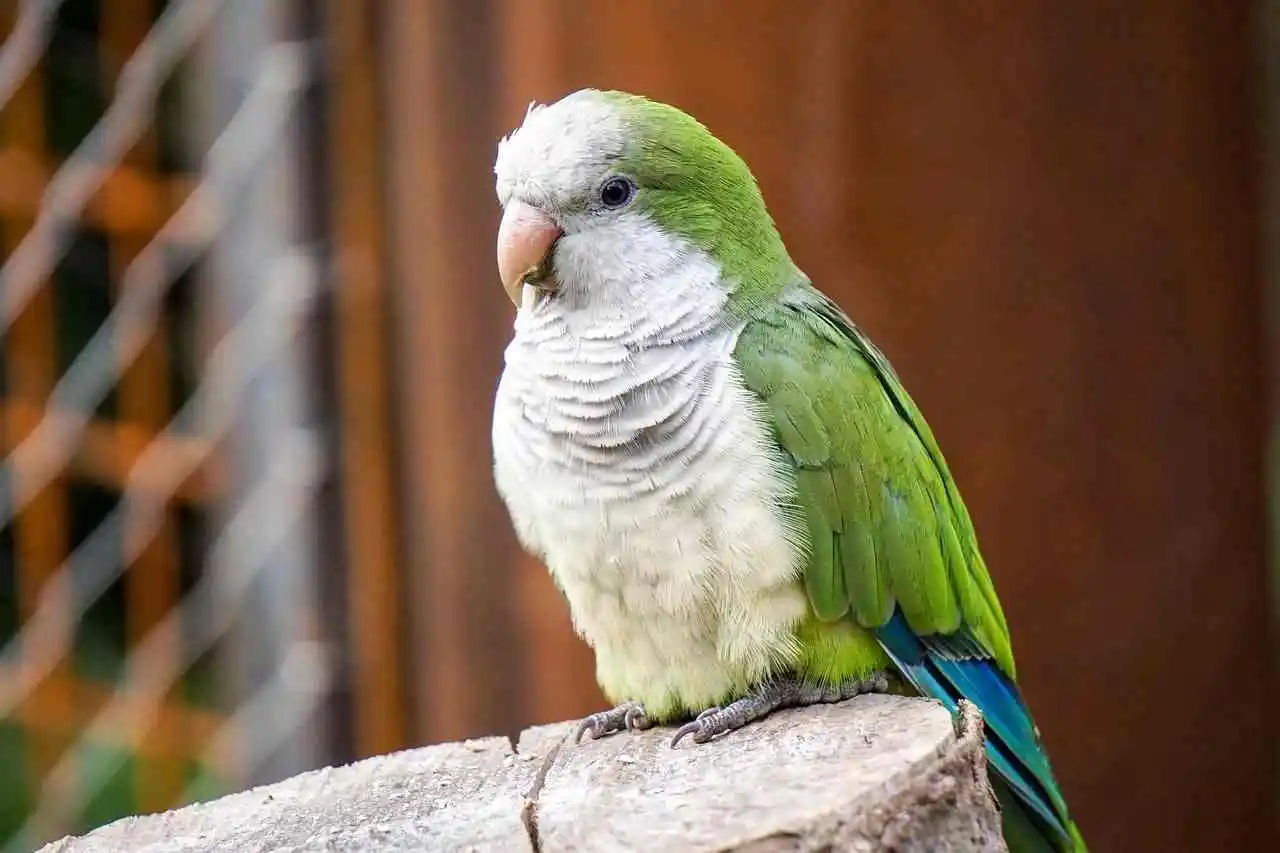
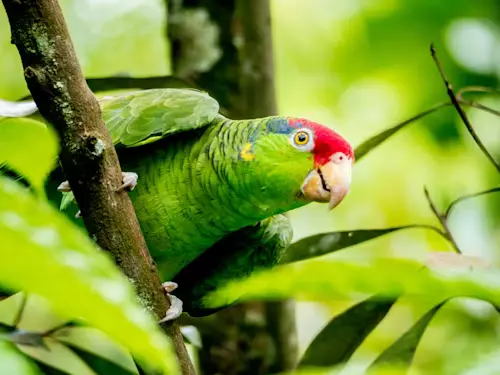
One Comment